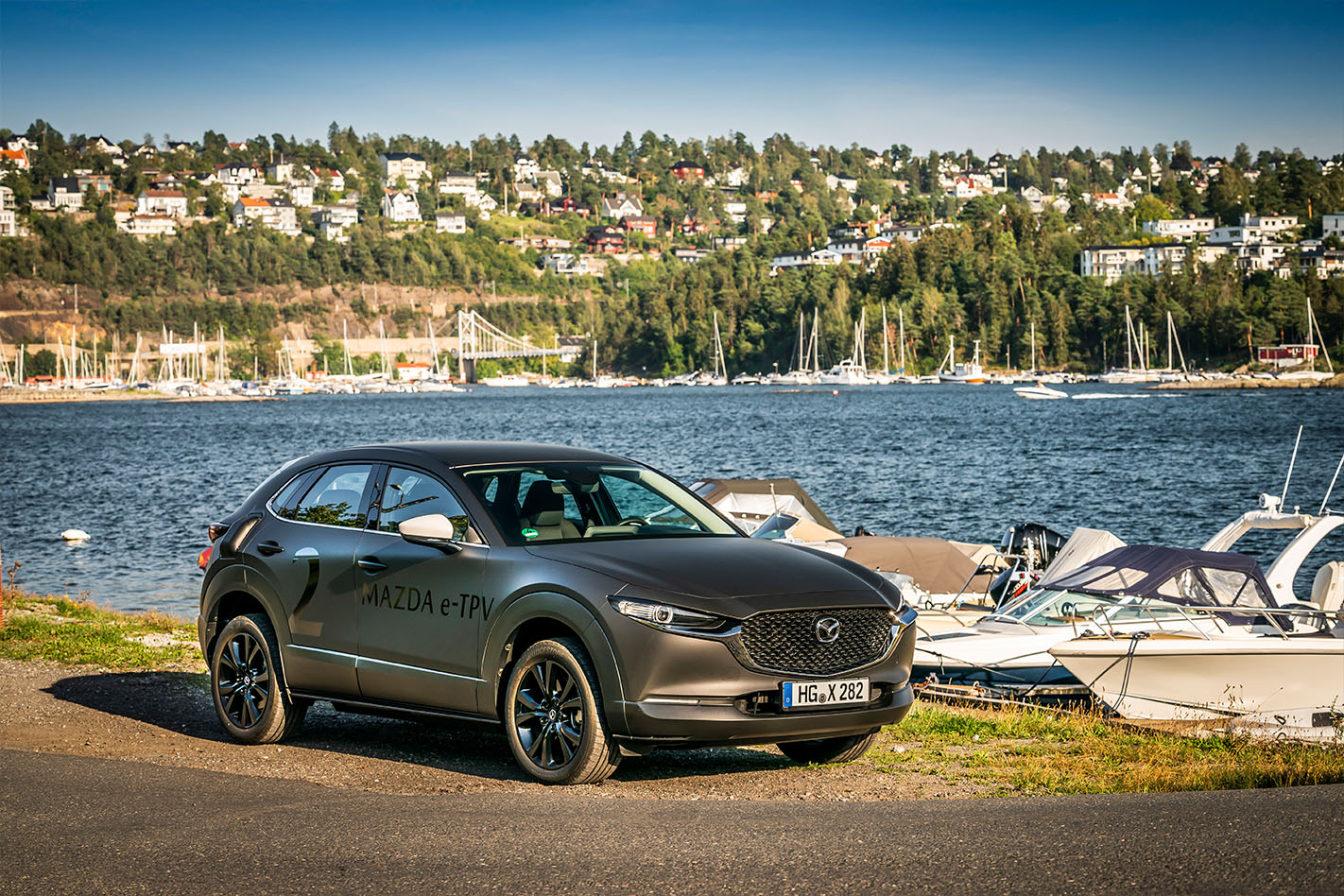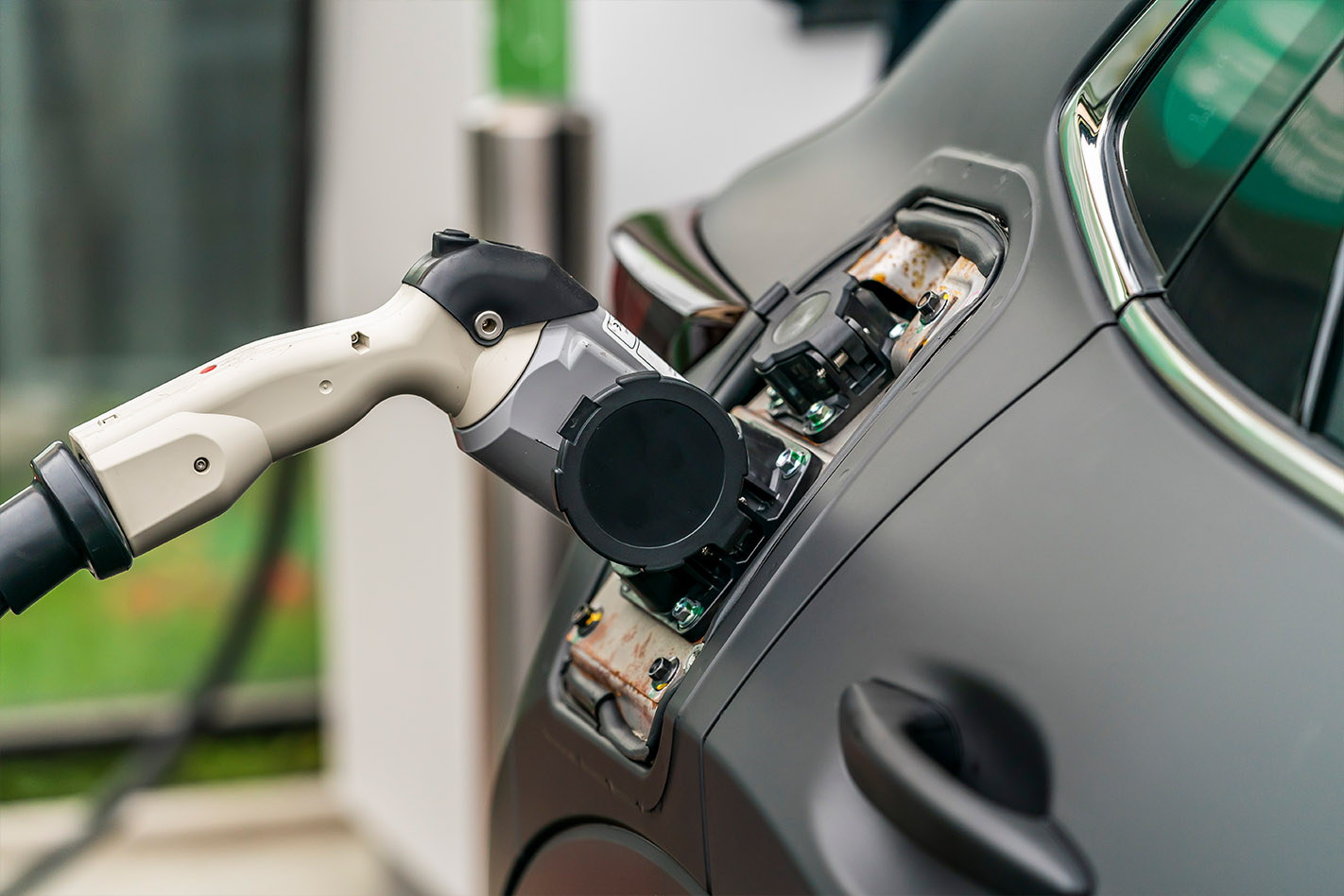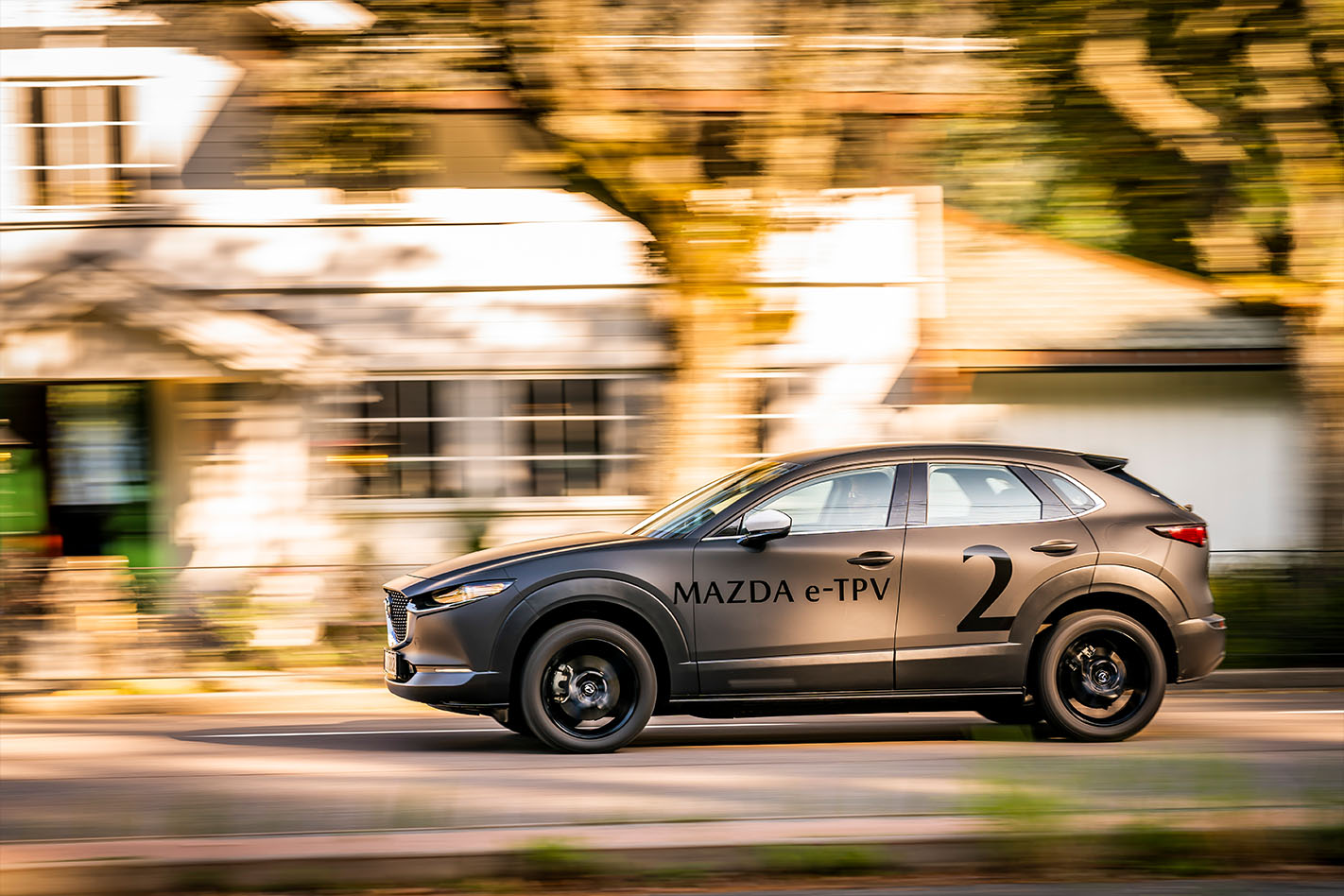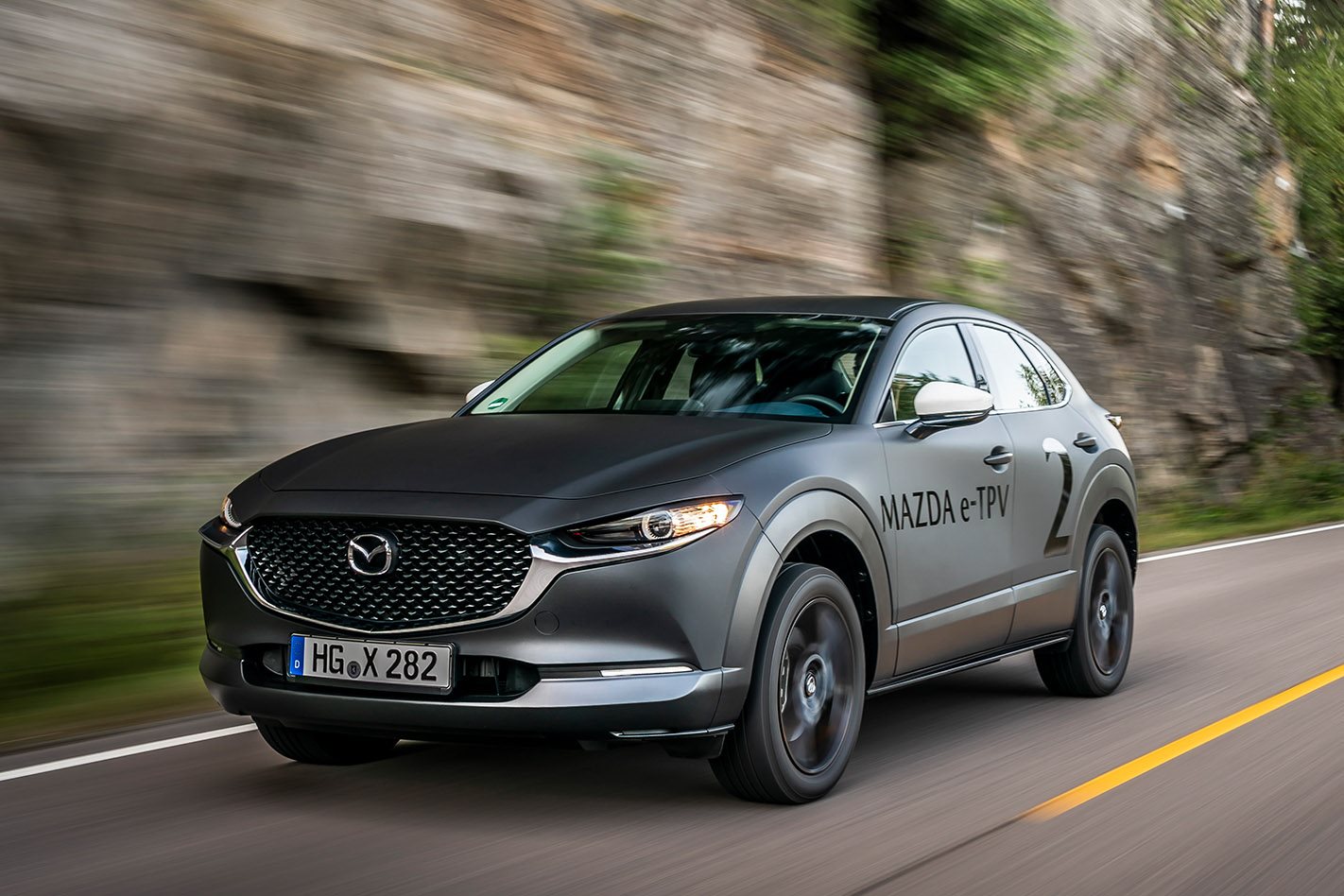Things we like
- Great fun to drive
- More car-like than other EVs
- Rides and handles well and yet still delivers torque-on-tap performance like an electric car should
Not so much
- Mazda says this car has been designed for markets with clean energy and lots of charging infrastructure. So, not us, then.
The Wheels Verdict: A genuinely unique EV experience, the new Mazda electric vehicle seeks to deliver “driving joy” by forcing you to drive it more like a traditional internal-combustion engine car, meaning you have to use the brakes rather than that weird EV regent-deceleration thing. The results are excellent and it really is fun to drive. Our lack of clean power and charging stations, however, means its potential in Australia is limited.

What is the Mazda EV TPV?
This is the first in a range of new EVs – and hybrids and range extenders – that Mazda will launch at the Tokyo Motor Show. It is likely to be a small SUV city car, but it won’t look like this. It uses a 35kWh battery, which means the range won’t be great (Mazda isn’t talking official figures yet), but with 105kW and 265Nm always on tap, it’s still got handy performance.

Why are we driving it?
Because this is a massive step for Mazda, a company that has always claimed it is more important to focus on reducing emissions from the cars people still buy, those with internal-combustion engines, but it now accepts it needs EVs too. We drove a TPV – Technology Prove-out Vehicle – with the new BEV architecture hidden under the skin of a CX-30, in Norway, the home of EVs, and thus a very weirdly futuristic place.

Mazda EV prototype review
As any dimwitted celebrity bint will tell you, if you’re going to be late to the party, you really need make an impressive entrance. After years of seeming intransigence on EVs, and giving companies like Nissan a running start, Mazda has finally declared it will launch a range of electrified vehicles.
Wheels flew to Norway – where the government’s goal is for EVs to make up 100 percent of all new cars sold by 2025 – to drive a TPV (Technology Prove-out Vehicle) of the company’s first BEV, and to get a sneak peek of the Rotary Range Extender set-up that’s more likely to be the car Australians will find palatable.

One way in which Mazda is making different noises to other car companies is its more honest and realistic-sounding tone. The company realises it must have a BEV on fleet to sell to countries like Norway and others where legislators are looking at banning ICE cars, but it estimates they will make up just 5 percent of its sales by 2030. The other 95 percent, by then, will feature some form of electrification, be they plug-in hybrids, series hybrids or Rotary Range Extenders (using a light and compact rotary engine, capable of running on compressed gas, LPG, biofuels or even hydrogen).
It is also making different noises inside its first BEV, which was wearing the skin of a CX-30, but will look “distinctly different” from other Mazdas when it is unveiled in final production form at the Tokyo Motor Show in October.

Mazda believes that “driving joy” – which it believes people still want, even if they’re buying an EV – can only be achieved if we can sense the distribution of torque through our ears, so its car produces a mix of futuristic blipping and zipping noises and a bit of fake revving under acceleration. It’s not overly loud, and makes a nice change from totally silent EVs.
More radically, the engineers believe that the best way for a driver to brace themselves under deceleration, and stay involved with the driving experience, is to use the brake pedal, and this is what makes Mazda’s BEV completely different.

While most EVs can be driven almost without using the brakes, because you get so much stopping force from regen as soon as you lift off the throttle, Mazda reduces this sensation massively, requiring you to use the brakes, and thus drive it just like a traditional ICE car.
First impressions are very positive – and familiarly Mazda – and the prototype also handled, rode and cornered extremely well.
The only potential problem is Mazda’s theory that the best way to keep CO2 down over an EVs well-to-wheel life cycle is to use the smallest battery possible, so it’s gone with a 35.5kWh unit, offering 105kW and 265Nm, and a range we’re guessing will be as low as 250km.
This doesn’t mean Mazda Australia won’t bring the new EV here, indeed they’re seriously considering doing so, but it does make the Rotary Range Extender, which is still “under development” and likely to arrive around 2021, a more realistic option for our market.
Things we like
- Great fun to drive
- More car-like than other EVs
- Rides and handles well and yet still delivers torque-on-tap performance like an electric car should
Not so much
- Mazda says this car has been designed for markets with clean energy and lots of charging infrastructure. So, not us, then.





